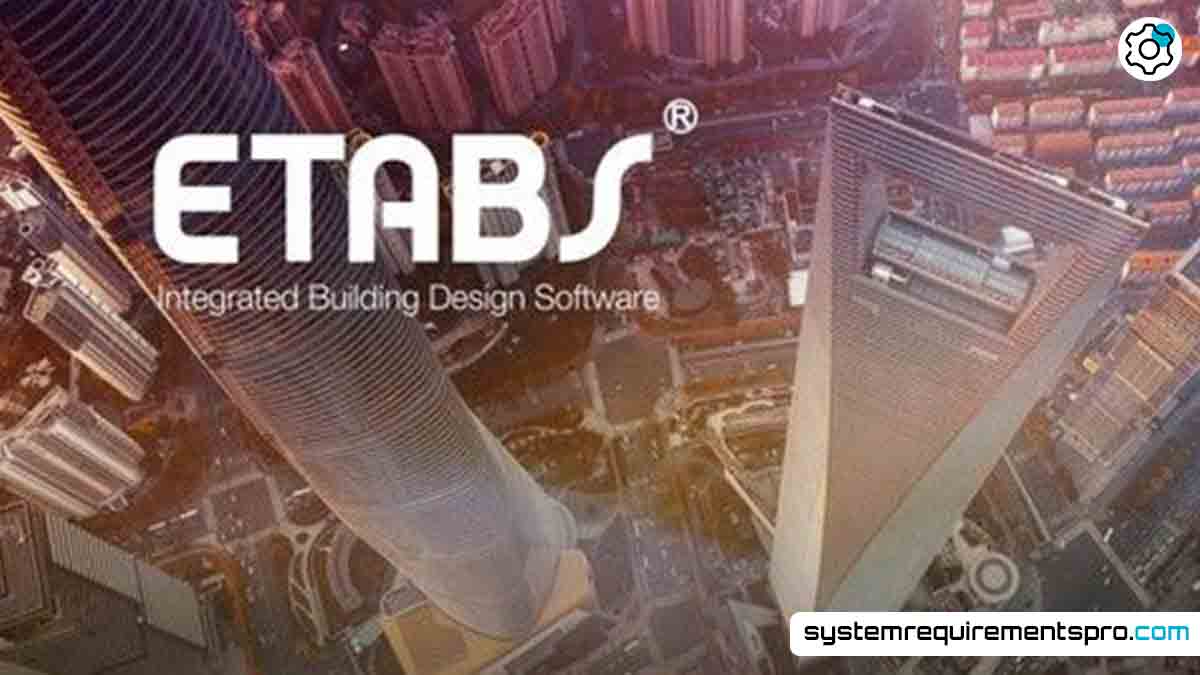Engineers and architects use programs like ETABS (Extended Three-Dimensional Analysis of Building Systems) to model, analyze, and visualize their projects when designing challenging buildings. Still, if your hardware isn’t up to the job, even the most sophisticated program will underperform. To ensure efficient operation, quick processing, and precise results, it is crucial to comprehend the ETABS system requirements. This guide covers all you need to know about the hardware and software requirements for effectively running ETABS, regardless of your level of experience—that of a student learning structural engineering or the seasoned professional.
ETABS Minimum System Requirements
You must be sure your computer satisfies the baseline requirements before adding ETABS. Although performance may vary depending on project complexity, these requirements guarantee that the software runs without major lag or crashes.
Minimum Requirements
- Operating System: You must have a 64-bit version of Windows 10 or newer. Older versions, like Windows 7 or 8, are no longer supported.
- Processor (CPU): A multi-core Intel Core i3 or AMD equivalent with a clock speed of 2.4 GHz or higher.
- Memory (RAM): 8 GB of RAM is the absolute minimum for handling small to medium-sized models.
- Storage: A hard drive with at least 15 GB of free space. However, traditional HDDs may slow down data access times.
- Graphics (GPU): Integrated graphics cards like Intel HD Graphics 4000 can run ETABS, but they may struggle with 3D rendering.
- Display: A monitor with 1366×768 resolution.
Although these requirements let ETABS run, users working on large-scale projects, such as tall buildings or complex structural systems, may have delays during analysis or rendering.
ETABS Recommended System Requirements
Professionals working on challenging models or multitasking across several engineering applications should consider investing in higher-tier hardware. Speed, stability, and seamless visualization are given priority in the recommended ETABS system requirements:
Recommended Requirements
- Operating System: Windows 11 (64-bit) to leverage the latest security and performance updates.
- Processor (CPU): An Intel Core i7, AMD Ryzen 7, or Xeon processor with a clock speed of 3.0 GHz or higher. Multiple cores improve parallel processing during simulations.
- Memory (RAM): 32 GB of RAM or more to handle large datasets and reduce lag during dynamic analysis.
- Storage: A 512 GB (or larger) NVMe SSD for faster model loading and data retrieval.
- Graphics (GPU): A dedicated GPU like NVIDIA Quadro RTX 4000 or AMD Radeon Pro W5500 with 8 GB VRAM for enhanced 3D rendering.
- Display: A 1920×1080 resolution monitor or higher, preferably with color calibration for detailed visual analysis.
Meeting these requirements guarantees faster solver times, better processes, and the capacity to handle resource-intensive chores, including wind-load simulations or nonlinear analysis.
ETABS System Requirements PC: Minimum vs Recommended
Your budget and workload will determine whether you choose minimum or recommended specs. Here’s a quick analogy:
| Category | Minimum Requirements | Recommended Requirements |
|---|---|---|
| Operating System Requirements | Windows 10 (64-bit) | Windows 11 (64-bit) |
| Processor Requirements | Intel Core i3 / AMD Equivalent | Intel Core i7 / AMD Ryzen 7 / Xeon |
| RAM Requirements | 8 GB | 32 GB |
| Storage Requirements | 15 GB HDD | 512 GB NVMe SSD |
| Graphics Requirements | Integrated GPU | Dedicated GPU (8 GB VRAM) |
| Display Requirements | 1366×768 | 1920×1080 or higher |
Professionals will gain much from the recommended configuration, even though the minimum specs are adequate for educational purposes or small projects. An SSD can halve model load times, for example, while a strong GPU speeds rendering, so improving real-time design efficiency.
Optimization Tips for the ETABS Software
Even if your system meets the ETABS system requirements, you can still optimize hardware and software for better performance:
- Close Background Apps: Web browsers or video editors consume RAM and CPU. Close them before running ETABS.
- Update Drivers: Make sure your GPU and CPU drivers are up-to-date to avoid compatibility issues.
- ETABS Settings:
- Reduce 3D model detail levels during early design stages.
- Turn off auto-save during long runs.
- Cloud Computing: For huge models, consider cloud options to offload processing.
- Regular Maintenance: Clean temp files and defragment HDD (if used) monthly.
Conclusion
The ETABS system requirements must be met for ETABS to function properly, which is a powerful tool for structural engineers. While the minimum requirements cover the essentials, the recommended configuration lets you use the program to its fullest, allowing for quicker analysis, more thorough visualizations, and more effective multitasking. Aligning your hardware with your project requirements and implementing optimization techniques will help you to simplify processes and concentrate on what counts most: designing safe, creative buildings.
Frequently Asked Questions
Can I run ETABS on a Mac?
ETABS is Windows native but you can run it on a Mac via Boot Camp or Parallels.
Does ETABS need an internet connection?
Only for installation, licensing, and updates. Offline use is allowed.
Do I need a dedicated GPU for ETABS?
Integrated graphics will work for basic tasks, but a dedicated GPU will speed up rendering and model interaction.
Can I run ETABS on a laptop?
Yes, if your laptop meets the recommended specs. Gaming laptops with high-end GPUs are often suitable.
How do I check my PC specs?
On Windows, go to Settings > System > About to see details about your OS, RAM, and processor.
We hope that you have found the answer to the system requirements for ETABS. Follow System Requirements Pro for more such updates, and bookmark this page to get the latest updates on the system requirements for ETABS.

